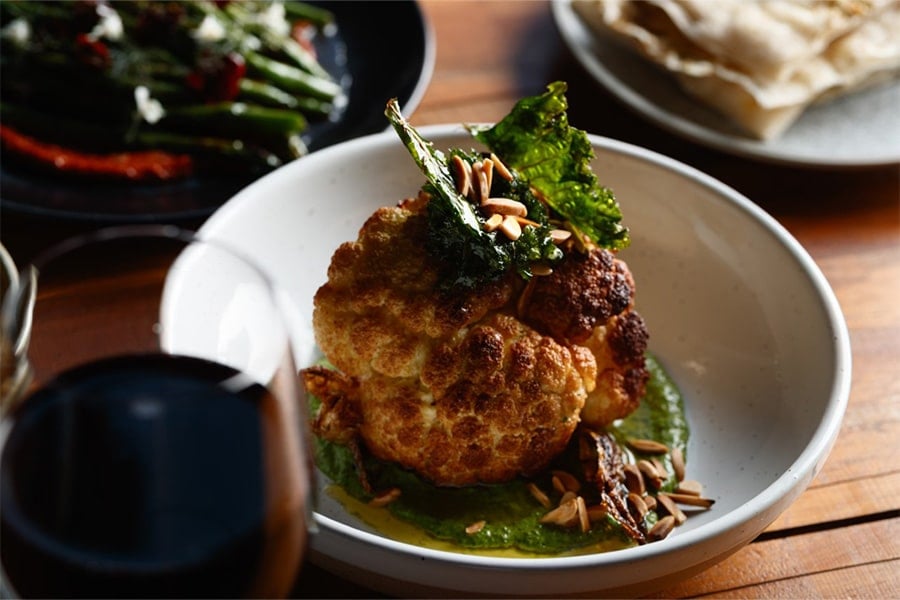
Over the past few months tension in Eastern Europe has all but erupted between Russia and Ukraine. As global leaders desperately and delicately try to salvage the conflict brewing with diplomacy, some of us are still trying to catch our breath and catch up on just what exactly is going on. So if you're only just beginning to make sense of the crisis taking place on the border of Ukraine, we're here to catch you up to speed.
Below, find 6 things you should know about the conflict between Ukraine and Russia; from the conflicts origins to what it means for the present day.
Russia and Ukraine have historic ties
The first thing you need to understand about Ukraine's relationship to Russia is that it was considered part of the Russian Empire for centuries before it was deemed a Soviet Republic post WWII. After the Soviet Union collapsed in 1991 Ukraine won its independence from Russia and has since attempted to distance itself from its imperial legacy, forming closer ties with the 'West'.
However, President Putin has publicly asserted that Ukraine is both fundamentally and culturally Russian territory, and is also intent on reunification. This bleeds into Putin's image of "the Soviet disintegration as a catastrophe that robbed Russia of its rightful place among the world’s great powers" and is the driving force behind his 22 years spent as President, with a focus on rebuilding Russia's military prowess and geopolitical influence to what it once was.
Tensions have been simmering away since 2014
Tensions between Russia and Ukraine have been simmering away since 2014 when then Ukrainian President Viktor Yanukovych, who was sympathetic of Putin, rejected an agreement with the European Union in order to establish closer relations with Moscow. Mass protests throughout Ukraine followed Yanukovych's decision and he was ousted as president. Shortly after, in an act of retaliation, Russia invaded Ukraine and annexed Crimea, while also enabling a separatist rebellion in the Ukrainian region of Donbas, which at the time of writing has led to over 14,000 deaths.
President Putin wants to prevent NATO expansion
At the heart of the conflict is Ukraine's desire for continued independence and western allies, and Russia's unwillingness to let this happen. Nothing demonstrates this dynamic better than the question of Ukraine joining the NATO alliance. For those who are unfamiliar with NATO, also known as the North Atlantic Treaty Organisation, it was established in 1949 in order to provide security to all countries involved as they sought to rebuild and heal in the wake of WWII. It was also used as a defence against the perceived threat of the Soviet Union. It has 30 member countries, of which the US, UK, Canada and a slew of countries across Europe are included and it is underpinned by the principle of collective defence, that is if one or any country was to be threatened or invaded, all member countries would mobilise and come to their aid.
After the Soviet Union fell in 1991, NATO set its sights on Eastern Europe enrolling countries previously considered part of the communist sphere, like Lithuania, Poland, Romania and Latvia among others. NATO expanded under the understanding that eventually Ukraine would also join the alliance. Of course, all these countries border Russia, and an alliance that was originally established to ward off Soviet influence is not exactly an ideal neighbour for Putin, that's why the last thing he desires is for Ukraine to join NATO. In fact he's described NATO's expansion as menacing and the possibility of Ukraine joining the alliance as an "existential threat" to Russia.
Global leaders have come out in support of Ukraine
In December 2021, Russia published a draft of demands that outlined what was needed from the US and NATO in order to ensure its security. The most salient demands were that NATO deny membership to Ukraine and other ex-Soviet countries as well as requesting that the alliance roll back troops in existing European countries aligned with NATO. However, the US and NATO rejected these main requests early in February 2022, a decision the Kremlin has said "provides little ground for optimism".
More recently, as it grows apparent that Russia is priming its military, the US and UK have come out in support of Ukraine by supplying weapons, while Germany, although hesitant to supply military equipment, has said that it plans to send a field medical facility to Ukraine in February 2022. Germany's position has since changed, sending an army convoy of 130 soldiers and 60 vehicles to Lithuania on Thursday, 17 February, bringing almost half of planned reinforcements for the country’s German-led NATO battlegroup. There is also talks from the US and European allies about placing sanctions on Russia if the country ends up invading Ukraine. These would take shape as cutting off Russia's access to the US Dollar and employing export controls that would block Russia from acquiring high tech.
Invasion is imminent
In US President Joe Biden's address on February 15, 2022, he acknowledged that the Russian Defense Ministry had reported that some of its military units were leaving their positions near Ukraine in a "partial" withdrawal of troops. According to US officials, as of February 15, 2022, Russia had around 130,000 troops stationed near the border of Ukraine. They also described evidence of a Russian war plan that intends on an invasion force of 175,000 troops that Ukraine’s military, despite US military equipment and training, would have little ability to stop.
As new information continues to surface, there have been several reports that contradict Moscow's claim that they are "partially" withdrawing troops from its border with Ukraine, despite a video published by the Kremlin that is meant to capture troops leaving Crimea. As well as this, there have been disputed claims that Russian-backed separatists in Ukraine have been attacked as commanded by the Ukrainian government in Kyiv.
On February 18, The Guardian reported US President Joe Biden saying that "Every indication we have is that they’re [Russia] prepared to go into Ukraine, attack Ukraine. My sense is it will happen in the next several days".
Russia attacks Ukraine
All fears have been realised. On Thursday, 24 February 2022 President Putin addressed Russia announcing a “special military operation” against Ukraine. In a translation of his speech courtesy of Al Jazeera, Putin outlined his motivations for launching attacks against Ukraine, categorising the Ukrainian government as "extreme nationalists and Neo-Nazis" who "will never forgive the Crimeans and Sevastopol residents for choosing reunification with Russia". The "military operation" was rolled out in support of separatist forces in Donbas, called the Donetsk People's Republic and Luhansk People's Republic, who the Ukraine government classifies as a terrorist organisation. Putin has described Ukraine's condemnation of the separatists as "genocide".
Putin's speech is heavy with the nationalist rhetoric of war and he caps it off with a chilling warning to the countries who have sided with Ukraine.
“Now a few important, very important words for those who may be tempted to intervene in the ongoing events," President Putin said. "Whoever tries to hinder us, or threaten our country or our people, should know that Russia’s response will be immediate and will lead you to consequences that you have never faced in your history. We are ready for any turn of events," he continued. "All necessary decisions in this regard have been made. I hope that I will be heard.”
His speech follows Ukrainian President Zelenskyy's attempt to appeal to Russian citizens with a video address on On February 22. In the footage he said, "We know for sure that we don’t need the war. Not a Cold War, not a hot war. Not a hybrid one. But if we’ll be attacked by the [enemy] troops, if they try to take our country away from us, our freedom, our lives, the lives of our children, we will defend ourselves. Not attack, but defend ourselves. And when you will be attacking us, you will see our faces, not our backs, but our faces".
It is the first time since WWII that a war of this scale has broken out in Europe and it threatens to destabilize the region. Since Putin's announcement footage has sprung up on social media of missiles being launched into Kharkiv, Ukraine's second largest city, and Kyiv. Russian troops have also reportedly seized control of the Chernobyl Nuclear Power Plant in Ukraine's north, while in the south-east port city of Mariupol heavy shelling has been confirmed.
President Zelenskyy has declared martial law across Ukraine with Ukrainian men aged 18-60 forbidden from leaving the country. At the time of writing Zelenskyy has also confirmed that 137 people inside Ukraine have died and 316 had been wounded as a result of Russia’s invasion and military attacks. Meanwhile in Russia anti-war protests have broken out, despite being strictly forbidden with Police making at least 1,702 arrests in 53 Russian cities.
Across the globe, members of the European Union, the US and Australia have put forward a variety of sanctions against Russia. However, the harshest sanction is yet to be enforced. Ukraine has called for 'Western' powers to disconnect the Russian financial system from international payments system SWIFT, used by more than 11,000 financial institutions in more than 200 countries. At the time of writing, world leaders like German Chancellor Olaf Scholz and US President Joe Biden are hesitant to resort to this. While Boris Johnson has signalled his approval.
Prime Minister Scott Morrison has also condemned Russia's attacks on Ukraine, saying that "There must be a price for the unprovoked, unlawful, unwarranted, unjustified attacks and threats and intimidation that has been imposed by Russia on Ukraine". In line with the UK and US, Australia has also enforced targeted travel bans and financial sanctions on eight individuals on Russia's national security council who are "aiding and abetting" the invasion, and broader sanctions will be extended to the separatist Ukrainian regions of Donetsk and Luhansk.
As more news unfolds, we'll be sure to keep you updated.



